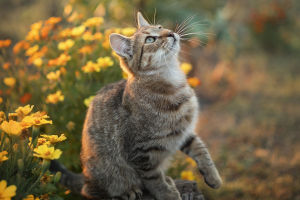Lykkers, have you ever wondered about the animal that moves the slowest on land? The two-toed sloth, known for its laid-back lifestyle and unique characteristics, might be one of the most fascinating creatures in the animal kingdom.
Today, we're going to explore everything there is to know about this sluggish, yet surprisingly charming mammal.
What Makes the Two-Toed Sloth So Unique?
The two-toed sloth is one of the slowest creatures on the planet. This nocturnal herbivore lives in the rainforests of South America, from Venezuela and Guyana to the northern part of Brazil, near the Amazon River. These slow-moving creatures are solitary by nature and spend most of their time hanging upside down from tree branches. Their long, curved claws help them stay suspended in the trees, where they feel safe from predators.
Physical Features of the Two-Toed Sloth
When you look at a two-toed sloth, you'll immediately notice its slow and deliberate movements. They are about 46 to 86 cm long, and they weigh between 4 to 8 kg—roughly the size of a medium dog. What really makes them stand out is their long, curved claws, which they use to grab onto tree branches. Their short necks and flat heads are other distinctive features. The sloth's fur is covered with algae, which gives it a greenish tint that provides camouflage in the dense forest canopy.
They have small teeth, with no incisors or true canines. Instead, they have simple molars that continue growing throughout their lives, helping them chew the tough leaves they eat. Interestingly, sloths carry a host of parasites on their bodies, including insects, fungi, and mold, which form a small ecosystem of their own.
Reproduction and Life Cycle
Sloths reach reproductive maturity at around 3 years for females and 4 to 5 years for males. After a pregnancy that lasts between six to nine months, a baby sloth is born, measuring about 25 cm in length and weighing only 356 grams. The baby clings to its mother's belly for the first five weeks, gradually gaining the strength to climb and start exploring on its own. In captivity, the longest recorded lifespan of a female sloth is about 36.8 years.
Sloth Behavior: A Slow and Steady Life
One of the most striking things about the two-toed sloth is its incredibly slow pace. They spend most of their day resting and sleeping, sometimes up to 15 hours a day! They're not in a rush to do anything and only come down from the trees when they need to move to a new tree or relieve themselves. Sloths have a low metabolism, which is why they only need to defecate about once a week. They also have a very short digestive system, which means food can remain in their bodies for up to a month.
Despite their slow movements on land, sloths are excellent swimmers! Their streamlined bodies and long claws make them well-suited for swimming, and they can easily cross rivers or small streams in search of new food sources.
Diet: A Leafy Feast
The diet of a two-toed sloth mainly consists of leaves, fruits, and sometimes insects. They are particularly fond of plants from the Cecropia genus. Sloths don't drink water directly, instead, they get their hydration by licking dew from the leaves or from the moisture in the plants they eat. Although they spend most of their time in trees, they occasionally come down to the ground when they need to move to a new area.
How Do Sloths Avoid Predators?
Because of their slow movements, sloths are vulnerable to predators, especially large birds of prey like the harpy eagle and the crowned eagle, and even big cats like the ocelot. However, sloths rely on their excellent camouflage to stay hidden in the trees. Their greenish fur blends in with the surroundings, helping them avoid detection by potential threats. If threatened, sloths may defend themselves using their sharp claws and teeth, but they usually rely more on staying out of sight than fighting.
Conclusion: The Fascinating Life of the Two-Toed Sloth
The two-toed sloth is a true marvel of nature. Despite its slow pace and seemingly simple life, it has evolved to thrive in the dense rainforests of South America. Its unique physical features, fascinating behavior, and special adaptations make it one of the most interesting animals in the world.
So, next time you come across a sloth, remember that it's not just a slow-moving animal—it's a survivor, perfectly suited to its environment. What's your favorite sloth fact, Lykkers? Share it with us in the comments!


